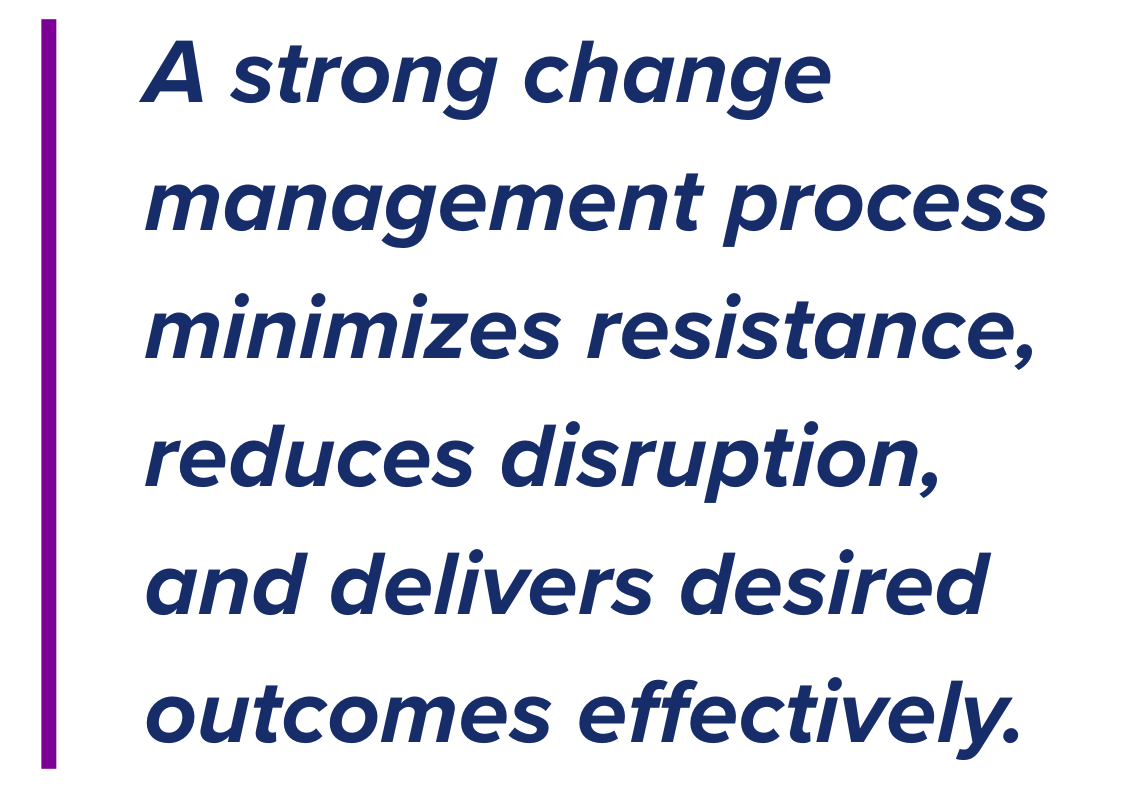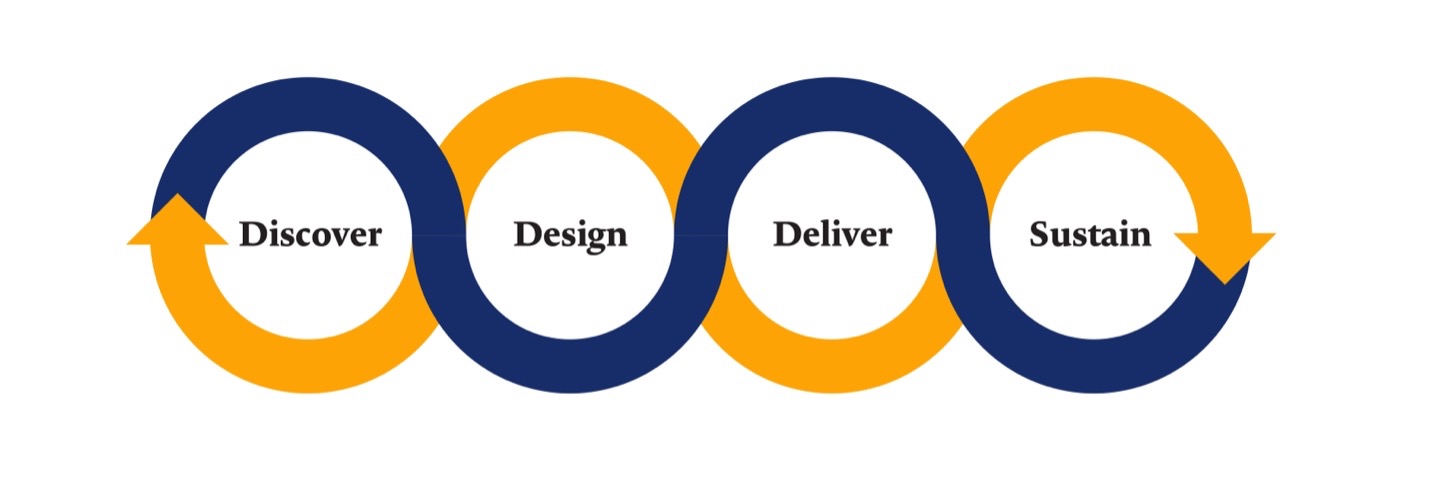Blog and News
Why Change Management Matters in the Government
When a key federal agency needed to scale a new service delivery program, Bixal applied its change management process to deliver results with minimal disruption.

Achieving Better Outcomes through a Change Management Process
Change poses a significant challenge for the federal government because of its massive scale and complex systems can hinder innovation and delay decision-making processes. That’s why a robust change management process is essential.
Research from Prosci [July 2025] shows that:
- Projects with excellent change management are seven times more likely to achieve their intended outcomes compared to those with poor change management. This is especially important in government projects, where managing change successfully helps agencies meet regulatory and mission-driven requirements.
- Effective change management can lead to a 29% increase in project adoption rates, shortening the time to return on investment. It’s crucial to show value as taxpayer spending is scrutinized, and delays in adoption directly impact the quality of public services.

How Federal Agencies Can Apply a Proven Change Management Process
Managing change effectively is crucial for sustained success. Successful change management can include adapting to federal policies and standards, implementing new technologies, or undergoing structural reorganization.
Bixal’s change management process combines best practices from industry-leading frameworks, human-centered design (HCD) principles, and Agile project management techniques.
Integrating HCD principles with Agile project management techniques can strengthen change management approaches by keeping the focus on user needs while ensuring flexibility and responsiveness. HCD ensures solutions reflect stakeholder needs, while Agile’s iterative framework enables continuous feedback, quick adjustments, and incremental improvements.
This methodology helps federal agencies navigate complex change initiatives and achieve lasting results by focusing on the needs and experiences of the people impacted by the change.
Core Elements of a Change Management Process

Humans often resist change because it disrupts their sense of familiarity, forcing them to confront uncertainty and abandon familiar patterns. Change management is a structured approach that guides individuals, teams, and agencies through the transition from the current state to a desired future state.
The change management process involves preparing, supporting, and equipping stakeholders to adapt to new methods, systems, or structures. This means setting a clear strategic plan to identify and address potential challenges, communicating openly to keep all parties informed, and ensuring strong leadership to drive and sustain the change.
Additionally, a change management process involves:
- Providing employees the necessary training and resources.
- Monitoring progress through measurable metrics.
- Celebrating milestones to reinforce positive engagement and motivation.
A strong change management process minimizes resistance, reduces disruption, and delivers desired outcomes effectively.

Phase 1: Discovery
Every successful change starts with understanding why it’s needed. This phase lays the groundwork for the entire effort.
In the Discovery phase, agencies:
- Assess the current state to identify what is working, and what is not.
- Define clear objectives and outcomes, and gather and analyze relevant data.
- Engage with key stakeholders and uncover potential challenges and opportunities.
To support these efforts, agencies should also evaluate organizational culture, resources, and capabilities to ensure alignment with the proposed change. A comprehensive understanding of these factors enables teams to develop a well-informed strategy that addresses specific needs and strengthens outcomes across every phase of the change management process.
Phase 2: Design
During the Design phase, agencies build the strategic blueprint for the change initiative.
This plan should include:
- Key milestones, activities, and deliverables to ensure a structured approach.
- A communications strategy that aligns with the organizational culture and effectively engages stakeholders at all levels.
- Identification of change champions who will drive and support the change.
Throughout the Design phase, teams should continuously refine their approach based on feedback and insights. This ensures that the strategy remains relevant, responsive, and effective.
Phase 3: Delivery
During the Delivery phase, the change management process moves from planning to execution.
Throughout this phase, teams should:
- Apply an Agile approach using short, focused sprints and real-time feedback to stay adaptable and keep things on track.
- Offer hands-on training and support tools like workshops, e-learning, and job aids to ensure all staff are equipped to adapt to the change.
- Monitor progress using both quantitative and qualitative metrics, helping leadership make data-informed decisions and keep teams aligned.
- Celebrate quick wins to maintain momentum and show impact.
- Put a risk management plan in place, including regular check-ins, mitigation tactics, and contingency plans to avoid delays or disruptions.
An effective change management process depends on clear direction, timely support, and proactive problem-solving to keep progress moving and teams engaged.
Phase 4: Sustain
The change management process doesn’t end at implementation–it must be reinforced over time; this is why the Sustain phase is so important. The goal of the Sustain phase is to foster a culture of continuous adaptation, enabling agencies to stay agile and responsive to future changes.
To make long-lasting changes, agencies need to:
- Maintain clear and consistent communication to reinforce new practices.
- Conduct post-change assessments to evaluate impact and identify areas for refinement.
- Create a feedback loop to gather user input and inform future updates and optimization.
To support this, we recommend developing a comprehensive reinforcement plan, which includes ongoing communication, training, and support to help individuals adapt to new ways of working.
Combined with a continuous improvement framework, agencies can ensure that the change management process delivers long-term results.
Want to learn how Bixal can support your agency’s change management process? Get in touch by submitting the form below!